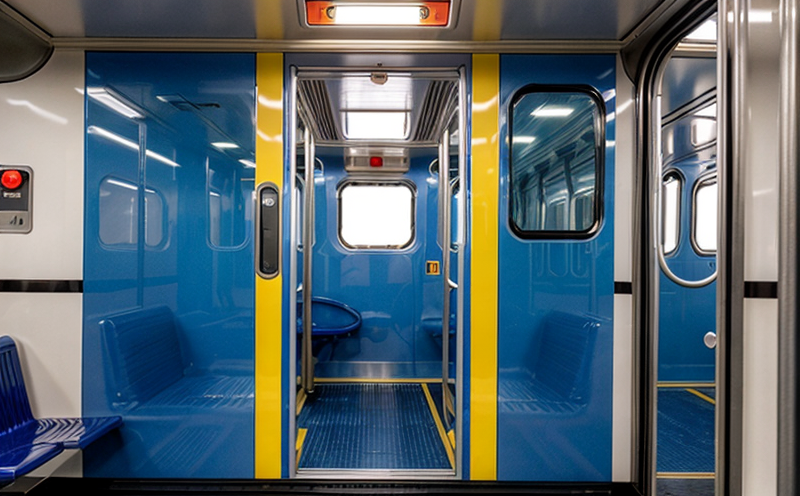Testing for Safety Mechanisms in Train Doors
Ensuring Passenger Safety The Crucial Role of Testing for Safety Mechanisms in Train Doors
The rail industry is a complex and highly regulated sector, where the safety of passengers is paramount. With the constant evolution of technology and increasing demand for faster and more efficient travel, train manufacturers and operators must ensure that their vehicles meet the highest standards of safety. One critical aspect of this is testing for safety mechanisms in train doors a laboratory service provided by Eurolab. In this article, we will delve into the importance of this testing process, its numerous benefits, and why its an essential investment for any business operating in the rail industry.
What is Testing for Safety Mechanisms in Train Doors?
Testing for safety mechanisms in train doors involves a comprehensive evaluation of the doors functionality, ensuring that it operates correctly and safely under various conditions. This includes assessing the doors locking mechanism, emergency release function, and overall performance during normal operation and in the event of an emergency. The primary objective is to verify that the door can be opened and closed seamlessly, without compromising passenger safety.
Why is Testing for Safety Mechanisms in Train Doors Essential?
The consequences of a faulty or malfunctioning train door are severe. A poorly performing door can lead to accidents, injuries, and even fatalities. Moreover, non-compliance with safety regulations can result in significant financial penalties, damage to reputation, and loss of customer trust. By investing in testing for safety mechanisms in train doors, businesses can mitigate these risks and ensure their vehicles meet the required standards.
Advantages of Testing for Safety Mechanisms in Train Doors
Eurolabs laboratory service offers a range of benefits that make it an attractive choice for rail industry professionals
Compliance with Regulations Our testing services ensure compliance with relevant safety regulations, such as those set by the European Union and national authorities. This minimizes the risk of non-compliance and subsequent penalties.
Improved Safety By verifying the correct functioning of train doors, we help prevent accidents and injuries, protecting both passengers and crew members.
Enhanced Efficiency Our testing process identifies potential issues early on, reducing downtime and increasing overall efficiency.
Cost Savings Investing in testing for safety mechanisms in train doors can save businesses money in the long run by preventing costly repairs, replacements, and regulatory fines.
Competitive Advantage By demonstrating a commitment to safety, rail industry professionals can differentiate themselves from competitors and establish a strong reputation with passengers and operators alike.
Reduced Liability Eurolabs testing services help mitigate liability risks associated with faulty or malfunctioning train doors, protecting businesses from costly lawsuits.
Peace of Mind Our laboratory service provides assurance that train doors meet the required safety standards, giving rail industry professionals peace of mind when it comes to passenger safety.
How Does Eurolabs Testing Service Work?
Our testing process is designed to be efficient and effective, with the following steps
Initial Consultation We work closely with clients to understand their specific needs and requirements.
Sample Preparation Train doors are carefully prepared for testing, ensuring accurate results.
Testing Our state-of-the-art equipment and expert technicians conduct comprehensive tests on the doors safety mechanisms.
Reporting and Analysis Detailed reports are provided, highlighting any issues or areas for improvement.
QA Frequently Asked Questions about Testing for Safety Mechanisms in Train Doors
Q What is the purpose of testing for safety mechanisms in train doors?
A The primary objective is to ensure that train doors operate correctly and safely under various conditions, verifying compliance with relevant regulations.
Q How often should I test my train doors?
A Testing frequency depends on various factors, including usage patterns, age, and maintenance history. Regular testing is recommended to identify potential issues early on.
Q What types of safety mechanisms are tested in train doors?
A Our laboratory service evaluates the doors locking mechanism, emergency release function, and overall performance during normal operation and in the event of an emergency.
Q Can I perform testing for safety mechanisms in train doors in-house or should I outsource to a third-party provider like Eurolab?
A While some rail industry professionals may have the necessary expertise and equipment to conduct testing in-house, outsourcing to a specialized laboratory service like Eurolab ensures accuracy, reliability, and compliance with relevant regulations.
Q What are the benefits of choosing Eurolabs laboratory service over other providers?
A Our team of expert technicians, state-of-the-art equipment, and commitment to customer satisfaction make us an attractive choice for rail industry professionals seeking reliable and accurate testing results.
In conclusion, testing for safety mechanisms in train doors is a critical aspect of ensuring passenger safety in the rail industry. By investing in Eurolabs laboratory service, businesses can mitigate risks associated with faulty or malfunctioning train doors, maintain compliance with regulations, and enhance overall efficiency. With our team of expert technicians and state-of-the-art equipment, we provide reliable and accurate testing results that give clients peace of mind when it comes to passenger safety.
Dont compromise on safety choose Eurolab for your laboratory testing needs today!




